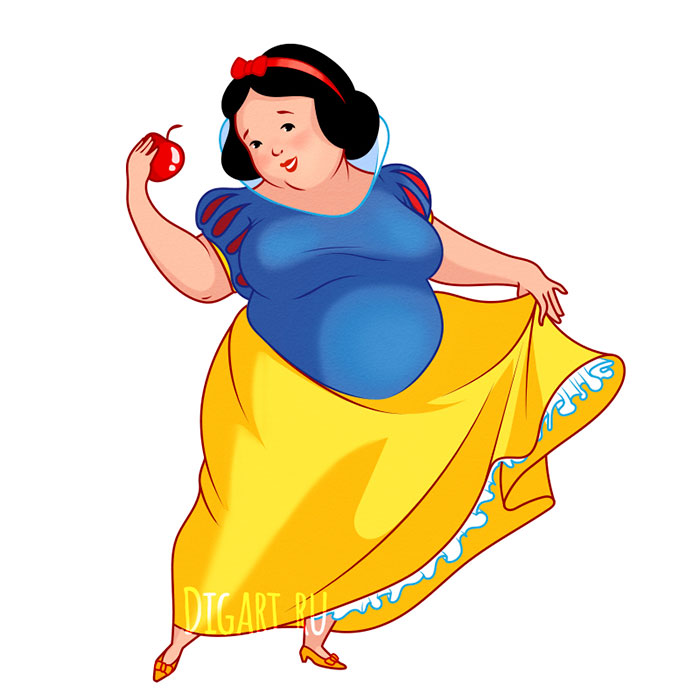I watched very few Disney movies as a child. The only one I saw was Pinocchio, and I was younger than five. However, I knew the stories and remembered I had a few children's books that took scenes from the movies to use as illustrations; therefore, Disney texts played a more important role than movies. Looking back on my own memories, I do believe those princesses affected me, especially Cinderella. She was blond, similar to almost all other princesses during that time, except for Snow White. I had dark short hair and hated it. Although I didn't consciously think it, she was thin, while I was big boned. Believing in the magic portrayed, talking to animals and having a fairy godmother, I thought one day it would happen to me. And of course, there was the prince who was extremely handsome and portrayed gentleness towards the protagonist. Who wouldn't want to marry the prince, live in a castle, have children and never have a care in the world? It was a small price for freedom, but then again, I did not know what being free looked like. Another part of Cinderella that also appealed to me was her goodness to all. I wanted to be a good person and feel good about myself. However, looking back, it wasn't fair these princesses went through numerous hardships and they never complained or got angry. It was hard work aspiring to be a Disney princess, perhaps impossible.
A couple of years ago, I watched Snow White and The Seven Dwarfs. It was at times, maudlin, and I actually made a face as Snow White cleaned the house and took care of the dwarfs everyday. Snow White had a sweet voice and behaved more like a young girl, instead of a women. In addition to Snow White, I also watched Sleeping Beauty with my niece. All three princesses were similar in that they were beautiful, according to American standards. They all experienced hardships and had no mothers, even Sleeping Beauty; fairies took her away, so she would not be hurt by the witch. All three suffered because of women in their lives, while princes lurked in the backgrounds. As I read Christensen's article, I know there are parts of myself still affected by traits displayed by the three princesses, especially their physical attributes.
Although I had limited experience with he movies, I agree with Christensen's view of secret education, particularly in regard to "the stereotypes and worldview embedded in the stories that have become accepted knowledge" (176). The movies' messages were strong enough to affect, not only me, but the generation of women I grew up with. Although my friends and I all had aspirations to attend college, there was still this need to have boyfriends and to think about marriage after college. We all looked to wear nice clothes and to have designers jeans, like Sassoon and Jordache (or Jord "ache" because of how painful it was to wear jeans so tight that one had to lie down and use pliers to pull the zipper up; I kid you not).
No woman can attain the beauty displayed by the media.
Frozen challenges my thoughts by having a more complex plot than the typical Disney movie. There are two princesses, Elsa and Anna. Both are different. Anna is warm and craves love, while Elsa is a hermit who cannot control her powers and lives in an ice palace by herself. When Elsa leaves town, she decides to "Let It Go." But to do that she must ostracize herself from society.
Anna, the other sister, is more comical and meets a prince who she wants to marry the first day she meets him. She is lonely and wants to have someone to love by her side. Elsa, who is now queen, does not grant Anna permission (rightfully so) because she has only known the prince for one day, even thought Anna claims it is "true love." Anna is who is also looking for love from her sister, puts herself into danger as she looks to find her sister in the mountains. She meets Christof, and iceman, and they become friends as he helps her find his sister. They share a true partnership, and one is not dominate (or subservient) towards the other.
At the end, only true love can break the spell, and it is Elsa who displays this towards her sister. When she kisses Anna, Anna becomes Unfrozen. It is at this time, it is realized that her magic is controlled by love. This act of true love does not include a prince saving the princess; it shows us that love takes on many forms!
In the end, Anna and Christof become boyfriend and girlfriend, which, if I may say, is very un-Disney like.



Working, playing, day or night...the look that's right! My mom would never buy me Jordache. They were way too sexy. I always wanted a pair. At least I got a member's only jacket. Peacock blue. Ohhhh lala.
ReplyDelete